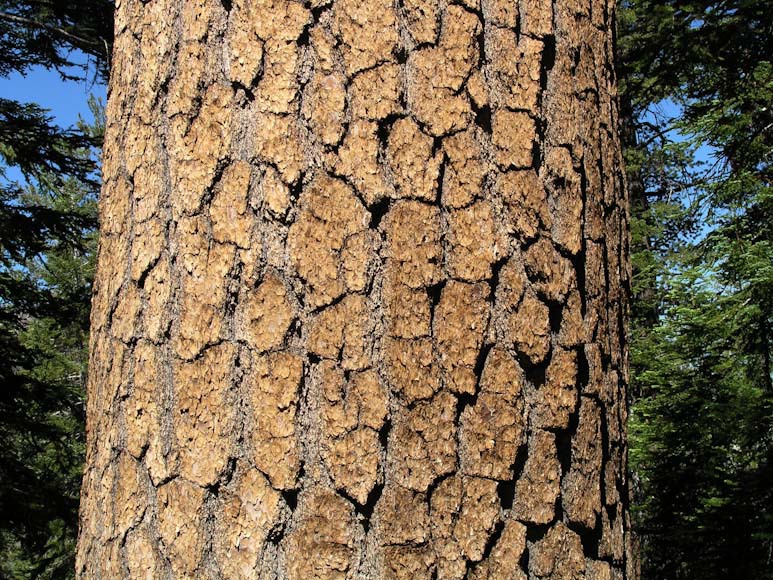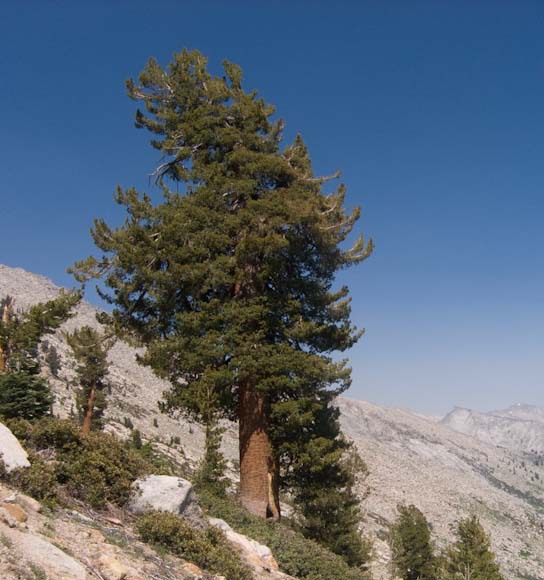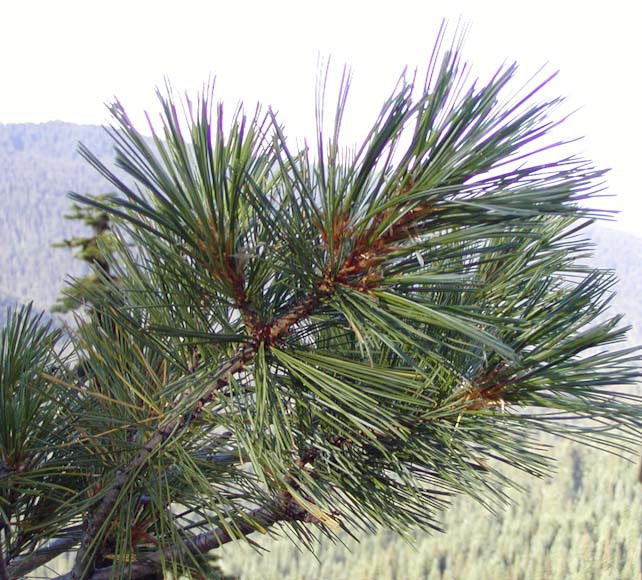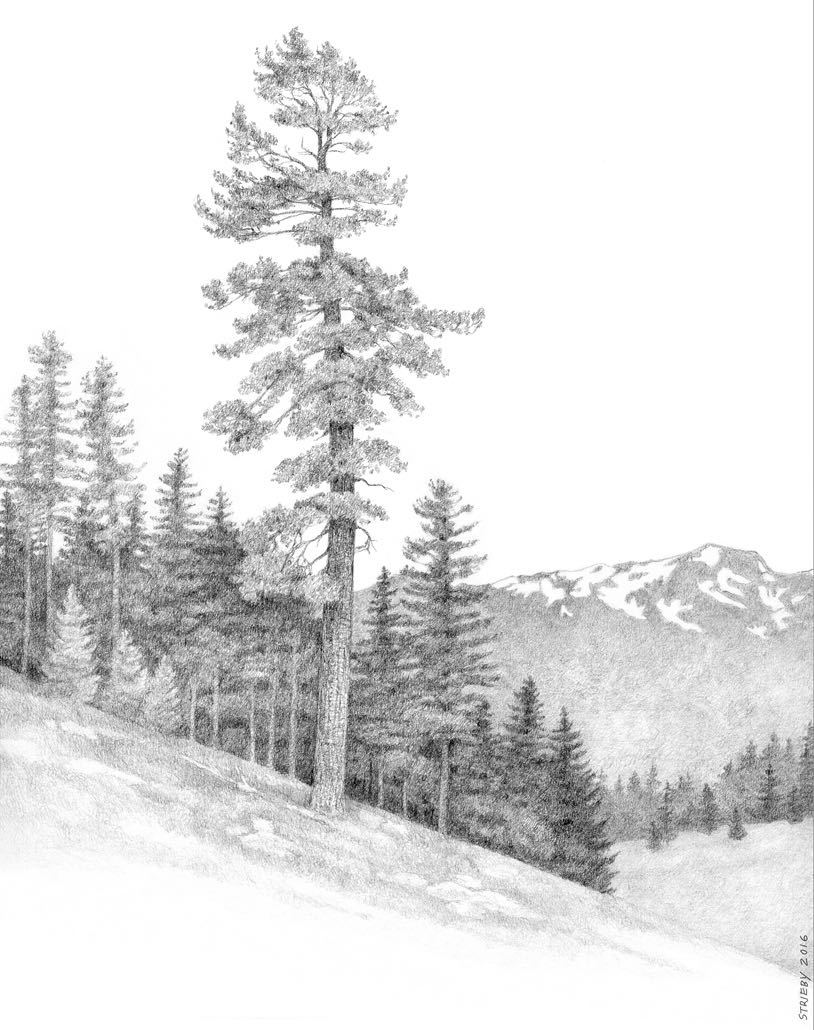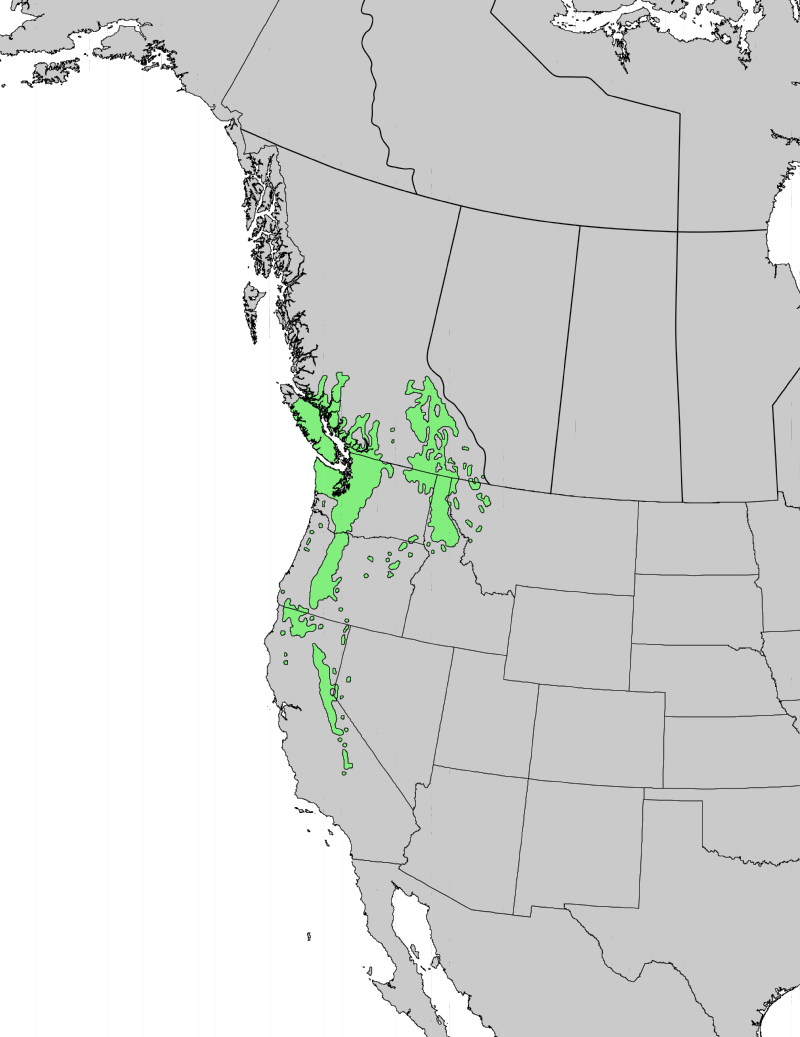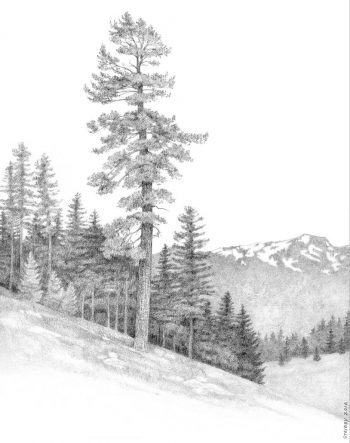
subgenus Strobus (Lemmon), section Quinquefoliae (Duhamel), subsection Strobus (Loudon).
Pinus monticola, as partially described by David Douglas (1798-1834) and completed by David Don (1799-1841) in Description of the genus Pinus, 2nd edition by A.B. Lambert in 1828 is commonly known as western white pine; silver, soft, fingercone, mountain, Idaho, or little sugar pine; and as pin argenté in the Spanish language. The epithet, "monticola" translates into "living in the mountains" in the Latin language. It is the most prevalent 5-needled pine of Western America.
Description. Western white pine is an evergreen coniferous species of tree that grows to mature heights of 100 feet (30 m) tall and with a straight trunk up to 3 feet (100 cm) in diameter at breast height, with a narrowly conic crown that becomes broad and flattened with age.
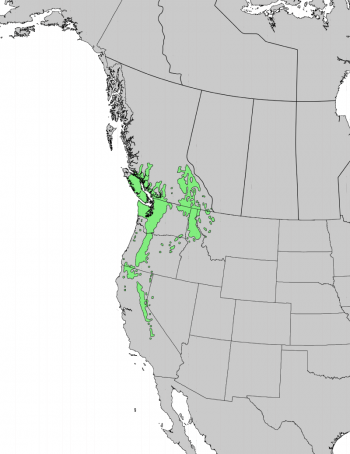
Distribution. This species is native to Western USA: Washington, Montana, Idaho, Nevada, Oregon, California; and Canada: Alberta, British Columbia at elevations of 3,200 feet (1,000 m) above sea level in the north, and at 6,000 to 10,000 feet (1,900 - 3,000 m) in the south. Its natural habitat is in lowland fog forests or on moist mountain soils, occasionally in forested bogs. Usually in mixed conifer forests, occasionally in pure stands.
Hardy to USDA Zone 4, cold hardiness limit between -30º and -20ºF (-34.3° -28.9°C).


